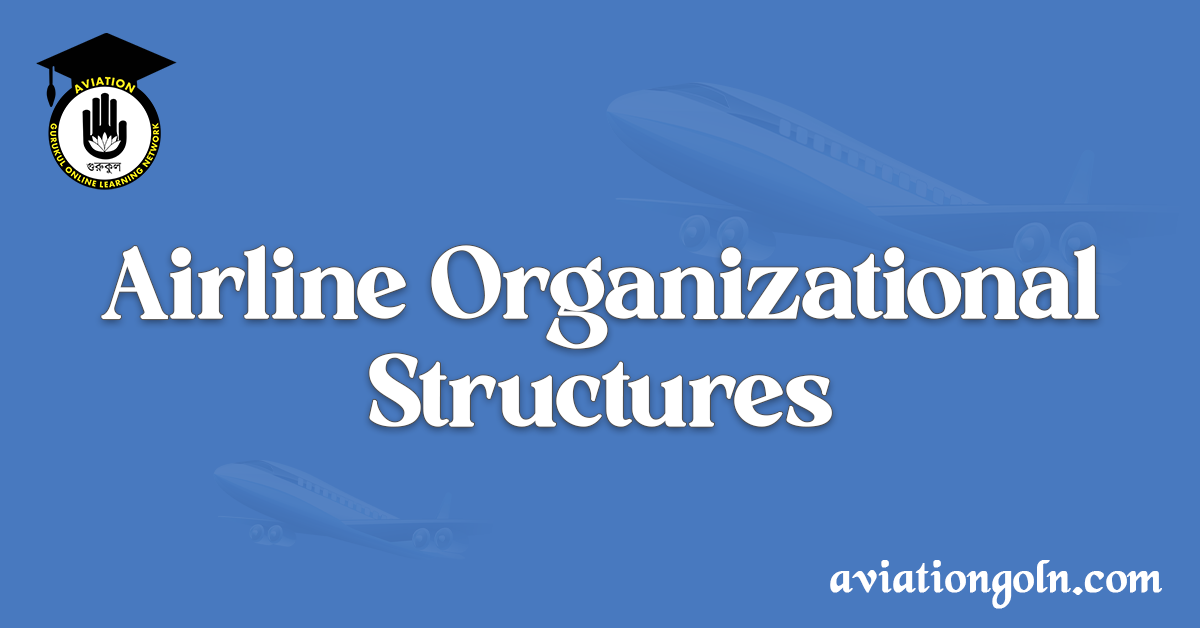Airline Organizational Structures: The airline industry, given its complexity and global scope, requires a rigorous and well-defined organizational structure to ensure smooth operations, profitability, safety, and customer satisfaction. The structure of an airline is the backbone that holds its operations together and ensures that the company runs as a cohesive unit. In this essay, we will delve deep into the airline organizational structures, exploring the various components that define and shape it.
Airline Organizational Structures
Introduction
An airline, regardless of its size and geography of operations, is more than just planes and pilots. It encompasses a wide array of operations such as fleet maintenance, customer service, sales and marketing, human resources, and more. The complexity of these operations requires a well-defined structure. This allows for clarity in roles, responsibilities, and authority, ensuring that various departments work in tandem.

Key Elements of an Airline Organizational Structure
2.1 Executive Management
This is the highest echelon in the airline’s hierarchy. It generally comprises:
- CEO (Chief Executive Officer): Responsible for the overall direction and strategy.
- CFO (Chief Financial Officer): Handles all financial aspects including budgeting, financial planning, and risk management.
- COO (Chief Operating Officer): Oversees daily operations of the company.
- CMO (Chief Marketing Officer): Manages branding, advertising, and customer engagement.
2.2 Flight Operations
The nerve center of the airline, flight operations oversees everything related to the flights themselves.
- Pilots: They can be further categorized based on experience and roles – Captains, First Officers, etc.
- Flight Dispatchers: Responsible for planning and monitoring the progress of a flight.
- Flight Training: Manages training programs for pilots, ensuring that they meet the regulatory standards.
2.3 Maintenance & Engineering
Ensuring that the airline’s fleet is in top condition is paramount.
- Maintenance Personnel: Technicians and engineers who carry out routine checks and repair tasks.
- Maintenance Planners: Schedule maintenance tasks to ensure minimal disruption.
- Quality Assurance: Ensure that all maintenance tasks meet the required safety and operational standards.
2.4 Commercial Departments
This covers all customer-facing aspects.
- Sales & Marketing: Promote the airline’s services and secure bookings.
- Customer Service: Manage interactions with customers pre-flight, in-flight, and post-flight.
- Revenue Management: Optimizing pricing based on demand, competition, and other market dynamics.

2.5 Ground Operations
From checking in passengers to loading luggage, this is where the action on the ground happens.
- Ground Staff: Handle check-in, boarding, and other airport-based customer interactions.
- Ramp Services: Oversee the loading and unloading of baggage, catering, and other supplies.
2.6 Support Departments
These departments, though not directly involved in flying, play a critical role in the airline’s operations.
- Human Resources: Manage recruitment, training, and employee welfare.
- Finance: Handle the company’s financial matters, from payroll to investments.
- IT: Manage the vast digital infrastructure that modern airlines rely upon, from reservation systems to in-flight entertainment.

The Evolution of Airline Organizational Structures
Traditionally, airlines had a strict hierarchical structure. But with the rise in competition and changing market dynamics, airlines are now exploring more flexible and adaptable structures.
3.1 The Traditional Hierarchical Model
Historically, airlines operated under a strict top-down model. Decision-making was centralized, and there was a clear chain of command. While this model ensured consistency, it often led to slower reactions to market changes.
3.2 Flat Structures and Decentralization
Modern airlines, especially low-cost carriers, have embraced flatter structures. Decision-making is decentralized, empowering lower-level employees and managers. This approach boosts efficiency and allows for quicker adaptations to market changes.
3.3 Networked Structures
As airlines form global alliances (like Star Alliance or SkyTeam), there’s a need for a networked structure. This setup facilitates collaboration among member airlines, sharing of resources, and joint decision-making on certain aspects.

Challenges and Benefits of Various Organizational Structures
4.1 Challenges
- Communication Barriers: As airlines grow and diversify, ensuring smooth communication becomes challenging.
- Bureaucracy: Larger, hierarchical structures often lead to bureaucratic delays.
- Resource Allocation: Deciding how and where to deploy resources, especially in decentralized models, can be a challenge.
4.2 Benefits
- Clear Chain of Command: Hierarchical structures offer clarity in roles and responsibilities.
- Flexibility: Flatter structures allow airlines to quickly adapt to changes.
- Collaboration: Networked structures foster cooperation among different entities.

Future Trends in Airline Organizational Structures
5.1 Embracing Digital Transformation
With the rise of AI, big data, and automation, airlines are restructuring to embrace these technologies fully. This might lead to the creation of new departments or reshuffling of existing ones.
5.2 Sustainability Focus
With growing concerns about the environmental impact of aviation, airlines might see departments focused exclusively on sustainability and green initiatives.
5.3 Customer-Centric Approaches
The modern consumer demands personalized experiences. We might see more departments centered around customer analytics and personalization.

The airline organizational structure is a complex web that ensures that massive operations run seamlessly. While the traditional models have served the industry well, changing times and market dynamics necessitate new approaches and structures. As airlines navigate these changes, one thing remains clear: the need for a well-defined, adaptable, and efficient organizational structure will always be paramount.
